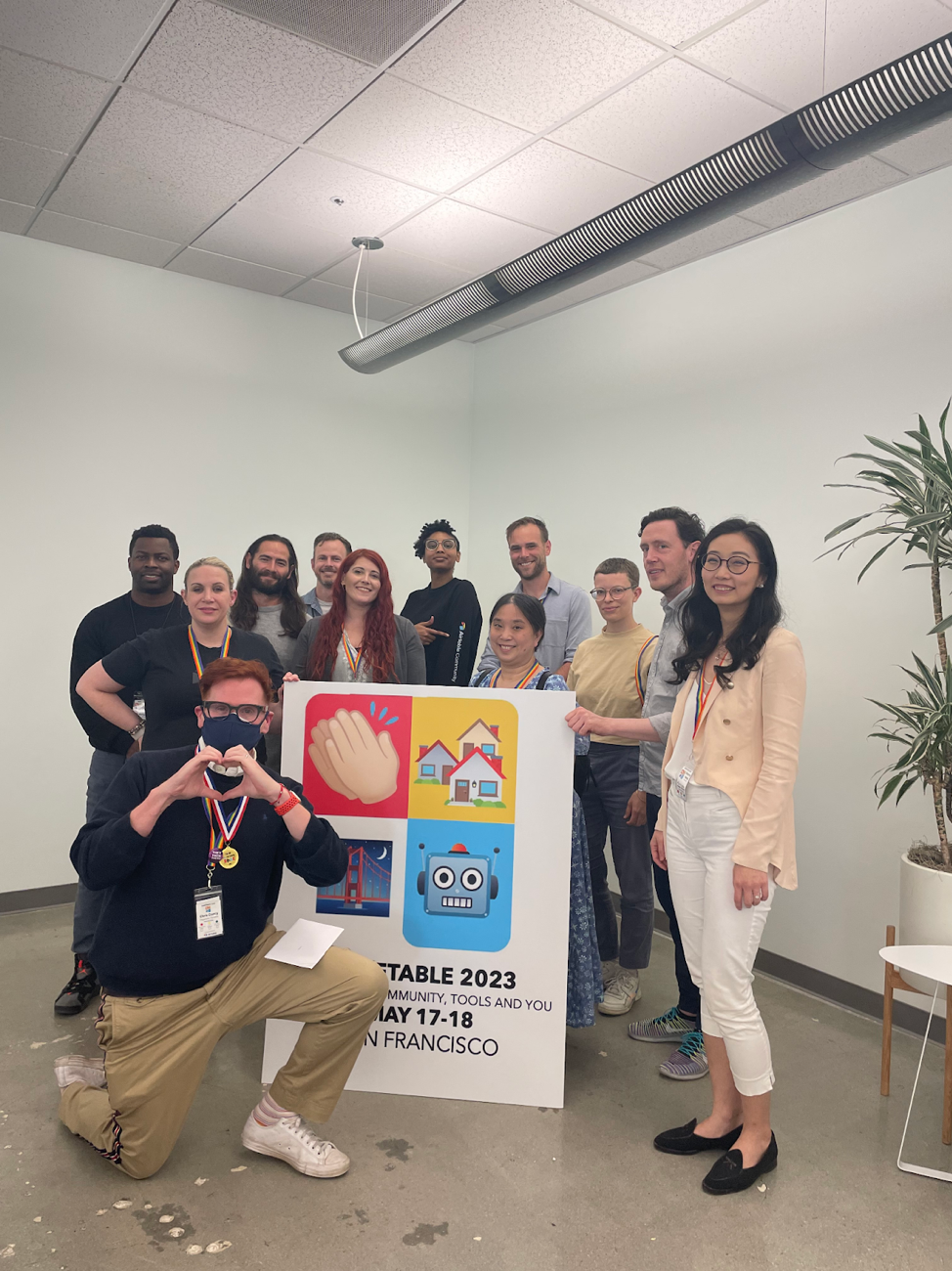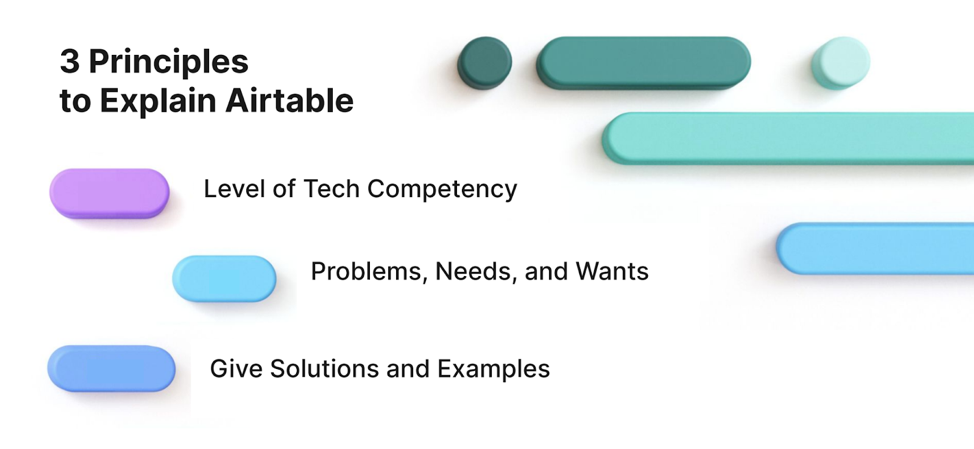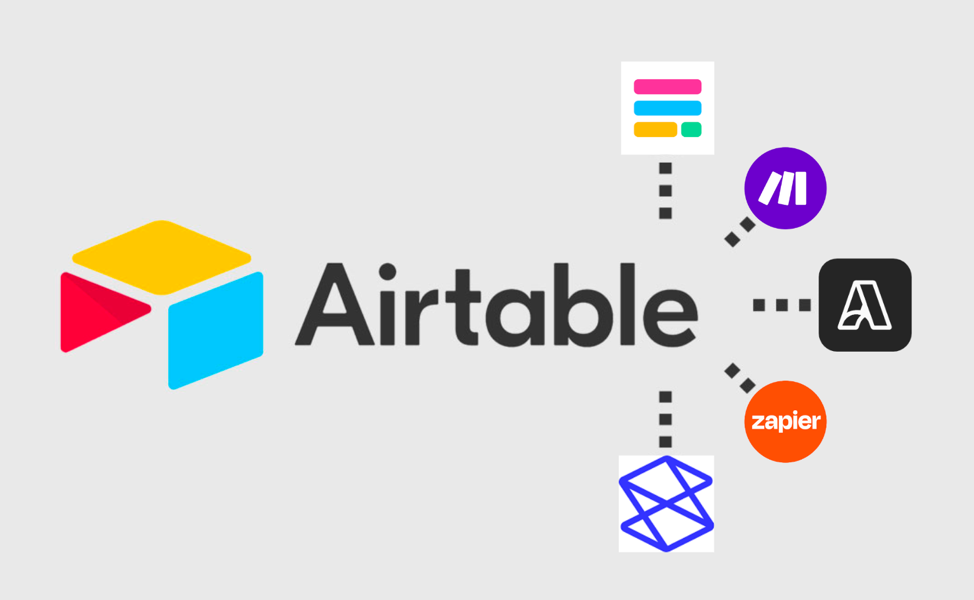
In part one of our blog series on Daretable, we explored Airtable future roadmap and the key investment areas that will shape its future. If you haven’t read it yet, we highly recommend checking it out! Now, in part two, we continue our journey by taking a deeper dive into the captivating conversations that unfolded at Daretable 2023.
Key Conversations
Throughout the conference, we had the privilege of participating in key conversations centered around unlocking the true value of Airtable. From exploring strategies for introducing Airtable to newcomers, to discussions on leveraging the power of AI and the ethical considerations surrounding emerging technologies, each conversation offered unique insights and practical takeaways. We also delved into the realm of third-party tools that integrate with Airtable, offering enhanced functionality and expanded possibilities. These tools enable users to further streamline their processes and unlock new capabilities, complementing Airtable beautifly.

Explaining the value of Airtable
Unlocking Airtable for the Uninitiated
It can be a challenging to explain Airtable to someone unfamiliar with the tool. Most of us recognize Airtable as a robust relational database tool with immense flexibility, catering to a wide range of use cases. However, for newcomers, navigating through the buzzwords and intricacies can be overwhelming. Airtable can be a project management tool, a CRM, an event planner, a bug tracker, a product roadmap and much more. The sheer versatility of Airtable makes it difficult to encapsulate in a single definition.
Before we dive into the practical steps of explaining Airtable to the uninitiated, it’s crucial to recognize the importance of doing so effectively. Take a moment to reflect on how Airtable has improved your own life, revolutionizing the way you work and organize information. By sharing your knowledge and explaining Airtable effectively, you have the opportunity to empower others to experience the same transformative benefits, further growing the community. A vibrant and diverse Airtable community not only enriches our own experiences but also cultivates innovation and collaboration among like-minded individuals.

3 Principles to Explain Airtable
1. Understand your audience’s level of technical competency
The first principle is to gauge your audience’s level of technical competency. It’s important to assess their familiarity with concepts like databases, spreadsheets, and tools like Excel. By understanding their existing knowledge, you can tailor your explanation accordingly. Meet your audience where they are and utilize terminology and examples that they can easily relate to. This will help them grasp the value of Airtable in a way that aligns with their existing understanding.
2. Uncover their problems, needs and wants
When explaining Airtable, understand what your audience wants in their personal and work lives to alleviate their workload. Is it a centralized source of truth, improved efficiency, or maintaining their sanity? Relate Airtable to their industry or address personal struggles. Identify areas for workflow improvements, such as organizing data or enhancing finance management. Consider their motivators and goals, such as a desire for a centralized dashboard or cost-effectiveness. Tailor your explanation to highlight how Airtable fulfills their specific needs and aspirations. Now is also a great time to mention that all of this can be solved with no/low code, meaning there is no need for costly developers.
3. Provide solutions and examples
Now that you understand your audience’s needs and have their attention, it’s time to provide them with concrete solutions and examples. Show them how Airtable can be the answer to their challenges and help them achieve their goals.
Demonstrate how Airtable can simplify complex processes and tasks by breaking them down into manageable steps. Showcase real-world use cases and success stories that resonate with your audience’s industry or specific needs. By presenting practical examples, you can paint a clear picture of how Airtable can transform its workflows and improve its efficiency.
Remember to emphasize that they don’t need to be an expert coder or rely on costly developers to implement these solutions. With Airtable’s low-code or no-code approach, anyone can create customized solutions tailored to their unique requirements.
When it comes to explaining Airtable to others, understanding your audience is paramount. By taking the time to truly comprehend their needs, desires, and pain points, you can craft a message that resonates on a deeper level. This is where your power to make a meaningful impact lies.
Imagine being the catalyst that introduces innovation and AI to your organization. Envision the satisfaction of helping your colleagues reclaim valuable time and witness your team reaching its full potential. It all begins with your ability to articulate the value of Airtable in a way that captures attention and inspires action.
Airtable for GOOD
Airtable for Empowering Positive Impact
With Airtable, we have the ability to build tools faster than ever, enabling us to support the causes closest to our hearts and make a meaningful difference in our communities. By harnessing Airtable’s speed and flexibility, we can create custom solutions that amplify our efforts and drive positive change.
By leveraging Airtable’s intuitive interface and low-code approach, we can swiftly create custom solutions that save time and resources. From volunteer management systems for local non-profits to interactive dashboards for fundraising campaigns, Airtable empowers us to streamline operations and make informed decisions.
The collaborative features of Airtable foster a sense of community among team members and stakeholders. Through shared databases and workspaces, we can work together seamlessly towards our common goals, further enhancing our ability to make a difference together.
Inspiring Stories from Daretable Conference
At the recent Daretable conference, we had the privilege of hearing inspiring stories of how Airtable has been used for good.
One remarkable story shared at the conference was about TADA non-profit based out of Brussels, Belgium. TADA is an organization that aims to elevate underprivileged youth out of their current circumstances, they provide a network that coaches youth as they grow up, empowering them to overcome the situations that they were born into. Sabrina De Croock traveled across the world to give her talk “Why inclusive software matters” focused on how she transformed TADA’s data siloed process bogged down by a plethora of Excel spreadsheets into a centralized database with effective KPI measurement and clear workflows using Airtable. Through this improved system the organization has been able to double in size, organizing over 1000 volunteer organizations to impact over 2500 vulnerable teenagers in Brussels, and these statistics are only continuing to grow.

Another inspiring example highlighted the important work of Alexander De La Campa, founder of A Future For Veterans Foundation and Rainge Water. He specializes in making a positive impact within the veteran community, as well as providing clean water to indigenous communities in need. His talk emphasized the importance of recognizing the intrinsic value within your own data production and taking control over the narrative of how it’s used. Alexander shared non-technical methodologies for data management leveraging Airtable, empowering us all to use Airtable to make our data work for us rather than against us.

Chris Dancy, the mastermind behind Daretable 2023 also took the stage to share with us how he has been using Airtable to do social good for the causes closest to his heart. Here are a few of our favorite projects he’s created:
- The Advocator a tool built using Airtable, Fillout and ChatGPT designed to leverage personal stories and AI to create custom emails that support your positions on social and health issues.
- Farm to Table is an app built with Airtable and pory.io to support an event that is dedicated to connecting the public with the farmers of Fulton and Montgomery Valley.
- Village of Fonda is an app built to let people in his village connect around common issues. The app serves as a central hub to keep the local leadership accountable.
His examples inspire us “to stop valuing our tools, and start tooling our values” – Chris Dancy
These stories remind us of the incredible potential Airtable offers in creating positive change. They inspire us to leverage its capabilities and develop innovative solutions that address societal challenges and make a lasting difference. Together, we can harness the power of Airtable to create a better world for everyone.
Artificial Intelligence
Unleashing Possibilities
In the rapidly evolving landscape of technology, AI tools like ChatGPT have emerged as powerful resources, capturing the attention of many in 2023. These innovative tools have the potential to elevate your organization and enhance your Airtable usage, opening up new horizons of efficiency and creativity. However, as we embrace the advancements brought by AI, it is crucial to maintain a balanced perspective.

If you have dabbled with tools such as ChatGPT, you may have noticed that oftentimes its responses can be worldly, and impersonal. It is clear that AI tools are only as powerful as the person using it. Instead of simply asking the model for a response, we learned the importance of providing it with a user-focused definition. By clearly expressing what we want the AI to embody and the specific characteristics we desire, we can guide its responses in a more tailored and meaningful way.
Another valuable tip we acquired is to leverage the organizational structure of ChatGPT’s web interface. Treating the chats in the left bar as folders and assigning them specific purposes can help create more focused and tailored interactions. By organizing and naming these chats appropriately, ChatGPT learns from the context and style of our conversations, making its responses even more effective and personalized.
Throughout our exploration of AI at Daretable, one fundamental principle stood out: preserving the human element. While AI can provide invaluable assistance, it should never overshadow our own human touch. Maintaining our intuition, critical thinking, and decision-making abilities ensures that AI remains a valuable tool that amplifies our strengths rather than replaces them.
3rd Party tools
Leverage tools to enhance Airtable
In addition to the powerful features of Airtable itself, one of the key highlights of the Daretable conference was the exploration of various third-party tools that integrate with Airtable to enhance its functionality and expand its possibilities. These tools offer a range of capabilities to further streamline your processes and unlock new potential within Airtable.

Here are four standout tools from the conference that we highly recommend exploring:
Aeropage is a powerful no-code builder to create complex and controlled workflows using Airtable. With Aeropage, you can easily generate dynamic emails, images, PDFs, AI content, and more, all using your Airtable data. The best part? Aeropage’s standalone tools are completely free to use!
Fillout is a powerful form builder built for Airtable. It allows you to create beautiful custom forms that match your brand, capturing and even updating data directly into your Airtable base.
Stacker is a versatile tool that helps you build powerful front-end applications directly from your Airtable data, with permissions to control who sees what data. Stacker makes it easy to build customer portals, CRMs, and internal tools to transform your Airtable base into a robust application for your team or clients.
On2Air is a comprehensive suite of Airtable app extensions that supercharge your Airtable experience. It offers a wide range of tools and functionalities, including robust document generation powered by your Airtable data, Airtable data backups, and advanced forms.
By leveraging these third-party tools, you can further optimize your workflows, streamline processes, and unlock new functionalities, ultimately maximizing the value you derive from Airtable
Bonus Content: Useful Formulas!
Two Airtable Formulas Shared by Kuvonne You Didn’t Know you Need
As part of the Daretable conference, we had the pleasure of learning some powerful Airtable formulas shared by Kuovonne, an Airtable community rockstar, that can greatly enhance your Airtable experience. These formulas are designed to provide advanced functionality and solve common data management challenges.
The first of the valuable formulas shared is a conditional formula specifically designed to prevent the accidental deletion of dependency fields within Airtable. While Airtable has recently introduced a feature to address this issue, it has limitations as it cannot account for dependencies in extensions, the API, or automation scripts.

The second formula methodology shared by Kuovonne revolves around data validation, addressing the limitations of Airtable’s built-in data validation. These formula examples provide effective methods to ensure that no essential data is missing or incorrect within your base.



If you’re eager to learn more formulas and expand your Airtable skills, we highly recommend checking out our course, Airtable Mastery. This comprehensive course includes a dedicated unit that covers a wide range of formulas. You’ll receive step-by-step instructions and real-life examples to help you master Airtable formulas effectively.
